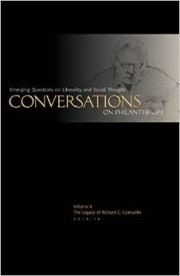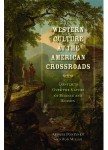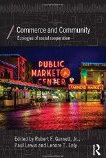The Transformation of Philanthropy: Causes, Processes, and Foreseeable Results
Paradigm Shifts—How They Work, and How to Work With Them
Philanthropy is undergoing a classic paradigm shift—a particular kind of historical change, which has a usefully intelligible character and direction. The generic phenomenon was identified by Thomas Kuhn, in The Structure of Scientific Revolutions (Chicago, 1962), and was readily applied in other fields of historical scholarship, especially to describe revolutionary change. More broadly applied, it refers to the total transformation of a mature field of human endeavor—“mature” in the sense of fully and coherently organized in its conceptualization, methodology, technology, and demographics, and fitting into its broader historical milieu, including technology, economy, societal infrastructure, cultural norms, and institutions.
Though powerful in historical scholarship, the concept is not much used in practical situations such as ours today in philanthropy. We know that changes and innovations are happening all around us, but unless we have this conceptual tool and model of paradigm shift in mind, the turbulence seems simply disorderly and chaotic, and its results impossible to predict. Kuhn himself thought it was impossible to predict what a New Paradigm would be until it was established and governing its field, because decisive innovations could happen very late in the game, even at the last minute. I agreed with that until very recently; I now believe that in some cases discernible outlines of a new paradigm can emerge gradually, so that the end becomes approximately foreseeable. We are now at that moment in philanthropy.
The first notice that we might be entering a paradigm shift appeared in the 1999 Catalogue for Philanthropy. In 2000 I publicized it to the profession in two articles of Foundation News, asking “Are We Entering a Paradigm Shift?” and “Are Foundations Being Marginalized?” It was already clear that the technological revolution of computers and the Internet was transforming everything they touched, and that philanthropy’s economy was being transformed by the huge new wealth in younger hands created by that technology and the globalization of commerce. The tipping point for my thinking was data gleaned from studies of the new, young, wealth-creating mega-donors, reporting that they were uniformly rejecting the traditional rhetoric and conceptualization of “giving back,” “giving away,” to “nonprofits,” in the “third sector,” etc. They found this too negative and academic, and instead were thinking in positive personal terms based on their experience in venture capitalism and start-ups, about “investing” in “changing the world,” “making a difference,” and “venture philanthropy.” When the technology, economy, demographics, vocabulary, and culture of a field are changing simultaneously, almost certainly a paradigm shift is happening.
Encouraged by the suggestion that all of philanthropy would be in flux and thus up for reconsideration, the Catalogue for Philanthropy immediately began to innovate freely in developing our own ideal systems of “donor education to increase charitable giving.” By 2008, mounting evidence of the shift was undeniable, so we published a book about it: Philanthropy Reconsidered. From that point on, we were consciously thinking about what might be the best way to organize American philanthropy for maximal productivity in charitable giving.
The chart below depicts the paradigm shift in philanthropy as it currently appears:
| Old Paradigm — 20th Century | New Paradigm — 21st Century |
| Technology | Technology |
| Telephone | Information and communications revolution with computers and Internet |
| Snail-mail | Global, universally accessible, instantaneous telecommunications |
| Printing on paper | All charities become visible and accessible by everyone |
| Multimedia, hand-held devices, social networks, crowd-fundraising | |
| Widgets enable frictionless, instantaneous one-click grants and donations | |
| Unlimited, low-cost databases and spreadsheets enable “Big Data” | |
| Economy | Economy |
| National, post-World War II manufacturing, stable, steady-growth, large national corporations, local-community oriented | Global, high-technology, service economy |
| Rapidly expansive, innovative, generating huge new wealth | |
| Old companies merging to take advantage of global markets | |
| Corporations less local-community oriented | |
| Institutions | Institutions |
| Large private foundations lead and professionalize the field | New mega-foundations with new styles bring new leadership |
| Community foundations multiply | Donor-advised funds rapidly grow and multiply |
| Large national corporate charities, some federated, industrialize fundraising by direct mail and telemarketing | Innovations abound; Internet speeds up communications and eliminates geographic impediments, reducing need for national top-down associations and conventions, and creating new online professional networks (e.g., Facebook, LinkedIn) |
| National professional associations created for grant-makers, fundraisers, and charities, dividing philanthropic community into separate constituencies | Decentralized virtual philanthropic communities emerge in cyberspace |
| IRS-based data conflates and confuses charities with “nonprofits”—hugely inflates numbers | Internet promotes systematization—e.g., of data systems, taxonomy of fields, searches for and direct access to all charities |
| National Taxonomy of Exempt Entities (NTEE) sorts into smaller interest groups named idiosyncratically, not logically or systematically | Leading national donor-advised funds (NDAFs) develop virtually complete, donor-based charities datasets, systematically taxonomized for donor education, liberating philanthropy from IRS-based conflation and confusion with “nonprofits” |
| NDAF donor datasets enable new depth and breadth in statistical analyses of donor behavior | |
| People | People |
| Professionalization makes philanthropy highly technical, dominated by social science-trained professionals and technical, procedural lingo | New wealth-creators emerge as risk-taking donor-investors and explore unconventional modes of giving and volunteering |
| Major donors are younger, systematic, data-driven quantifiers. They reject the negative vocabulary, conceptualization, and rhetoric of the Old Paradigm | |
| Want constructively to improve the human condition, more like the classical concept of philanthropy | |
| Practices | Practices |
| Industrialized mass fundraising by telemarketing and direct mail | Promoting increased giving and philanthropy itself |
| Donors not represented by national institution. Independent Sector formed to represent everybody, but actually composed of national foundations | Donor education; venture philanthropy; giving circles; e-philanthropy |
| Grant seeking and fundraising become sales transactions, increasingly competitive and adversarial, pitting fundraisers against grant makers and donors | Social network systems; collaborations in and among constituencies and sectors |
| Professional community broadens to include philanthropic advisors, scholars, and media | |
| Culture | Culture |
| Social scientific; social engineering, purporting to attack roots of problems; vocabulary is technical | Humanistic and social-scientific self-development for both donors and beneficiaries; social scientific tools for explicitly humanistic ends |
| The word and concept of “philanthropy” falls into disuse | Use of the word and concept of “philanthropy” is revived |
| Classical humanistic culture of philanthropy seen as quintessentially American— informed building Colonial society, the Revolution, the Constitution, anti-slavery, and women’s suffrage movements | |
| Rhetoric | Rhetoric |
| Inadvertently negative and moralistic: “Giving back,” “Giving away,” through “nonprofits,” or “tax-exempt entities” in the “third sector” to the “disadvantaged” and “needy” | Constructive appeal; “Donor-Investors,” “Making a difference,” quantifiable impacts, “social change,” and “charities” |
| Generosity = how much one gives | Generosity = relation of giving to wealth |
| Results | Results |
| Giving = < 2% Gross Domestic Product and Adjusted Gross Income | Too soon to tell—combined factors above will drive significant increase |
| Only 25% of taxpayers itemize charitable deductions | |
| Less than 20% of estates over $650,000 make charitable bequests | |
| 5% of largest charities get 80% grant dollars | |
The paradigm-shift depicted above is in progress. The “New Paradigm” column is, therefore, a projection—not just of certainties, but also of what seem to be probabilities. This chart’s purpose is to encourage and assist future planning.George McCully – Catalogue for Philanthropy – © 2015 [For more information: [email protected]] |
|
First, notice its structure. The various factors in each vertical column are interconnected, in a coherent system of mutually reinforcing and coordinated parts, comprising a paradigm, or the governing model, of philanthropy—how it used to work. The horizontal rows suggest the transformation from the Old (OP) to the New Paradigm (NP) that is occurring in each factor area. Since the shift is still in progress, much of the right-hand column is hypothetical—not yet fully established. Only a few of its elements already exist and seem likely to persist and interconnect; others are foreseeable but their vertical connections are not yet solid facts. The second column is only an outline of what the NP might be; its final features are as yet indefinite.
Second, this means that the process by which the New Paradigm takes shape works in two ways: a sorting out in practice of the many innovations that are created under the pressures and stimuli of change all around, discarding those that turn out to be ephemeral, and leaving those that gain traction and persist; and a connecting of the survivors into the cohesive over-all vertical structure of mutually-reinforcing parts that will constitute the New Paradigm.
The process is not neat. Some elements of the Old Paradigm will last longer than others, and may even survive the turmoil with some adaptation; many will go extinct because they fail to adapt and their characteristic features are incompatible with the New Paradigm. Some innovations will turn out to be temporary, perhaps with early success that does not last because they either cling to Old Paradigm elements that are dying, or fail to connect with other New Paradigm candidates. Finally, some innovations will succeed and flourish, connecting effectively with others. An innovation is more likely to succeed and connect if it is more fundamental to the success of the field itself and of the New Paradigm—in this case, of philanthropy as it is emerging from the transition. Superficial innovations are either flashes in the pan or possible successors as minor features adhering to parts of the New Paradigm.
This analytical tool also makes possible some influence on the transformation process and in navigating through it. If the name of the game is paradigm shift, then the challenge is to find, among the myriad innovations that are occurring all around, those most likely to gain traction, succeed, and endure, knowing that many and perhaps most will not; then to ally with the likely winners, and to dissociate from the probable losers. It is important to realize that paradigm shifts are serious business—they have winners and losers, and their innovations are both constructive and destructive. Thus we should ask which are the dinosaurs, stuck in the mud of the Old Paradigm? Which are the smaller furry mammals, scurrying around under and around the dinosaurs, creating their own new ecosystem? Which are the dead-end aberrations? What new practices should we adopt, and with what new players should we collaborate symbiotically, to increase our own probabilities of success under the new regime? Survival will depend on the right combination of prudence, opportunism, and creativity, realizing that it is probably not wise just to sit still and hope for the best.
Third, this chart is about American philanthropy as a whole, but its methodology can also be applied to specific parts, fields, locations, or microsystems therein. One might compose a similar chart for one’s own organization in its own philanthropic neighborhood or market. What is the Old Paradigm in this region? Which of its elements are probable dinosaurs? What innovations are being introduced, and which of those seem most promising to succeed and flourish? How should we relate to them for our mutual best interests? Collaboration is a better strategy than competition; philanthropists are all on the same team, for greater good.
Finally, notice how meager were the “Results” of the Old Paradigm in charitable giving, which remained static at less than 2 percent of GDP and personal income for the entire last half of the twentieth century, even though the techniques of fundraising were steadily improving and being perfected (within the constraints of that paradigm). Was this the best that we in philanthropy can do? No, because the Old Paradigm was fundamentally flawed.
The New Paradigm
In 2012 we found what we believe might be the revolutionary keystone of a New Paradigm. But first, some caveats: The historical transformation from the Old to the New Paradigm, which began in the 1990s, will take some unpredictable length of time to complete, dependent as it is on human behavior and unforeseeable innovations. For the same reasons, various parts or factors of the transition will also take various and unpredictable times for fulfillment. The chart can only identify salient features of each paradigm, and how they can be classified in factor groups that suggest transitions within each group, from Old to New—e.g., technology, economy, demographics, etc. Factors in the various groups can exert influences on factors in other groups, of course, which further complicates the timing of transitions. Nor is the pace of change consistently related to the obviousness of practical advantages to be gained. Some changes, which may seem to be obvious “no-brainers,” will nonetheless develop or be adopted slowly, owing to their ties with the past. Connecting them all will also take unpredictable time. The bottom line is that over all, though this revolutionary and total transformation is inexorable, its details now predicted will remain uncertain until they are actually established.
Some of these changes are conceptually simple and obvious. The technological revolution of computers and the Internet is clearly the engine driving this paradigm shift, but it is a revolution still unfolding, with surprising innovations at a seemingly accelerating pace; whether and where it will settle down to an established New Paradigm, with new norms of operation, is an open question. It is not unlikely—and we should think about this—that continuing and accelerating technological transformations may be a constant condition in future philanthropy.
At the other extreme of speed is the replacement of obviously flawed and fallacious Old Paradigm technical equipment by clearly advantageous innovations. The confusion and conflation of “philanthropy” with the IRS rubric of “nonprofits” was always factually incorrect—hence unwise, misleading, and useless—but the dataset from which it was derived had no competition and was so unmanageably large—over a million organizations nationwide, especially using Old Paradigm technology of typewriters and paper printing—that there was never much point in examining it either as a whole or in detail. Today, armed with an etymologically and historically accurate and clear definition of “philanthropy,” and with computers, spreadsheets, and the Internet, the Old Paradigm fallacies have become embarrassingly visible and indefensible. State-by-state Master Nonprofit Data Files are now downloadable, so the evidence is easily available and conclusive. The problem now is that the largest and mainstay institutions of philanthropy are locked into the obsolete conceptualization and dataset, so they have fundamental rethinking to do—never easy.
The Catalogue, not burdened by tradition and with strong reason to start afresh, downloaded and examined the Massachusett’s dataset of 42,000 organizations, and we found that only about 4,000 were truly philanthropic—“private initiatives for public good,” and reporting any revenue from grants and donations. This ratio of 1:10, projected nationwide, means that there are only 200,000-300,000 philanthropies in the United States—far fewer than the 2.2 million “nonprofits.” This 1:10 projection is independently confirmed—nationally, by donor-based charities datasets comfortably within the 200,000-300,000 range, generated by millions of gift and grant decisions since 1991 by nationwide donor-advised funds (NDAFs—Fidelity, Schwab, and Vanguard); and at state levels by state portions of the NDAFs and statewide community foundation datasets; as well as by the rapidly growing donor-based datasets of online giving platforms (e.g., Network for Good), and even by users of GuideStar (not its managers, who still talk about 2.2 million “nonprofits” for which they claim to keep useful data). Both scholars and practitioners are increasingly moving away from the synonymy of “philanthropy” with “nonprofits.” It is doomed.
Another obvious candidate for extinction is the NTEE (National Taxonomy of Exempt Entities) of “nonprofit” (including philanthropic) fields, which is intellectually an unsystematic and linguistic mess that no amount of tinkering will save. Because computerization promotes systematization, it will inevitably be replaced by a clear, systematic arrangement of fields with ordinary English names—e.g., “Nature,” “Culture,” and “People.” The Catalogue began to create its own alternative taxonomy in 1997, when we found the NTEE useless for either data management or donor education. In 2011 we connected our taxonomy with our newly cleansed charities dataset for Massachusetts, to create the Massachusetts Philanthropic Directory system for donor education. It is being awarded a U.S. patent, to help protect its quality from inferior knock-offs. We are now broadening its usage through collaboration with other states and institutions nationwide.
With this alternative, which we are happy to share, NDAFs and statewide community foundations could do the conversion either by themselves or with our help, to vastly improve their internal data management and donor education programs. NDAFs especially have a huge opportunity to share their data with the public for marketing advantages, and collaboratively as a philanthropic public service. They are growing at five to six times the rate of the rest of philanthropy—the top three are already in the top five of public charities nationally in annual revenues. Their increasing conspicuousness at that level will evoke increasing public pressure to share their datasets of charities and (for statistical purposes only) donors. Statewide community foundations with much smaller datasets can advance more rapidly to create state-based systems of donor education to increase charitable giving. This would also strengthen their competitive position vis-a-vis the NDAFs in attracting donor-advised funds. The superiority of the new system from these various directions will be clear, so early adopters will have the leadership advantage, precipitating falling-domino effects.
This process will create the cornerstone of the New Paradigm. When these charities datasets are combined, which with so many change agents seems inevitable, knowledge about philanthropy will become donor-based and systematically taxonomized for donor education, action, research, and statistical analyses. At that point philanthropic data will be permanently liberated from the NTEE and the IRS-based confusion and conflation with “nonprofits”—clearly a revolution, with a catalytic effect: the New Paradigm will quickly coalesce into a new infrastructure for philanthropy.
When that happens, all charities—even the smallest, in the smallest and most recondite fields, in the most remote locations—will be easily searchable, visible, and directly accessible online by everyone. There will be a knowledge explosion in philanthropy, as charities and donor behavior will be illuminated in far greater detail, from far larger numbers of each, than ever before. The Old Paradigm knowledge and understanding of philanthropy will fade away.
Technology is also transforming the transactions of charitable giving. By 2014, widgets and links had been created for holders of donor-advised funds to make grants electronically, even on hand-held devices. Charities can also register with the hosts of the funds so that the instant a grant is made, the dollars are transmitted electronically directly from the donor-advised fund—or eventually, no doubt, a personal bank account—into the bank account of the charity. In other words, instantaneous, frictionless, nearly effortless grantmaking and giving is now a reality and needs only to be extended for universal participation. Giving will certainly and significantly increase, and fundraising will open up new opportunities.
The institutional infrastructure of professional philanthropy is also being transformed by technology. Under the Old Paradigm, national professional associations were created by the largest foundations to professionalize philanthropy—to train, certify, and facilitate communication within each constituency: grantmakers (generally; then community, corporate, family, and small foundations); fundraisers; philanthropic advisors; “nonprofit” executives; and scholars. Today those services are no longer needed from national organizations; their constituencies have been professionalized, communications and training are ubiquitous online, professional groups form, multiply, and diversify spontaneously in online social networks, all at extremely low cost and responding to felt needs. As a result, costly memberships in national membership organizations have declined and their fiscal deficits have increased; they are all engaged in strategic planning and re-tooling to justify their existence and establish new revenue streams. Many have chosen to offer online training workshops, webinars, etc.—already an overcrowded competitive arena. Where this will end is unknown, but the proliferation of novel programs is evidence of systemic decline, not growth.
Two national professional associations, however, might survive and even flourish.
The clearest example is NTEN—the Nonprofit Technology Enterprise Network. Founded in 2000 as an association of techies in (mainly) philanthropy, to defend, keep abreast of, and promote their rapidly growing field, their membership has exploded, paralleling technology’s own transformation of philanthropy in the paradigm shift. NTEN now has 9,000 dues-paying institutional and individual members, and 50,000 participants in its various programs, both nationwide and abroad. They will certainly be one of the cornerstones of the New Paradigm infrastructure, but even they have some adapting to do, perhaps starting with changing their Old Paradigm name.
Another possible survivor is Independent Sector (IS), founded in the early 1980s to bring together the philanthropic community as a whole, including donors, in response to the fragmentation of the profession into silos by their separate associations. Because the New Paradigm will probably work back the other way, toward consolidation and building philanthropic community to promote a culture of philanthropy in America, IS could, with prudence and opportunism, provide a natural institutional nucleus of that strategic direction. This would require strategic leadership and substantial adaptation in the paradigm shift, and it is not clear that IS is so inclined.
Conclusion
Building a national culture of philanthropy in America is a top priority for the New Paradigm. The Old Paradigm could not, and thus did not, develop a culture around the IRS-related concept of “nonprofits.” Thus it had almost no cultural influence on its environment. Its academic, social-scientific, factually spurious, and inadvertently negative language (“non-profit,” “tax-exempt,” “third sector,” the NTEE, “giving back,” “giving away,” etc.) produced uninspired low results in charitable giving, professional fragmentation, and intellectual weakness and disorder. The New Paradigm is rediscovering the long humanistic tradition of “philanthropy” and its values—“love (cultivation) of humaneness among both benefactors and beneficiaries, through identification and exercise of values through giving and volunteering, in private initiatives for public good.
The Catalogue for Philanthropy’s discovery in the late 1990s that charitable giving could easily be increased through donor-education—not mere advertising, but increasing and promoting public knowledge and understanding of philanthropy—was entirely consistent with the Classical concept of philanthropía—historically a synonym for humanistic education and culture. If the New Paradigm succeeds in reviving this Classical view of philanthropy and illuminating its formative influence as a quintessential American value on our Founders, the American Revolution, and our Constitution,[1] the New Paradigm can powerfully enrich American culture in general, with positive ramifications far beyond the increase of charitable giving. This could include a revival of liberal education and a re-invigoration of State Humanities Councils as promoters of philanthropy—strengthening both. All of this could help create an American Renaissance.
View as PDF
NOTE
[1] George McCully, Philanthropy Reconsidered—Private Initiatives, Public Good, Quality of Life (A Catalogue for Philanthropy Publication, Bloomington, IN: AuthorHouse, 2008). See also the review of Olivier Zunz’ Philanthropy in America: A History (Princeton, 2011) in Beneficence 1, no. 2 (Spring 2012).






